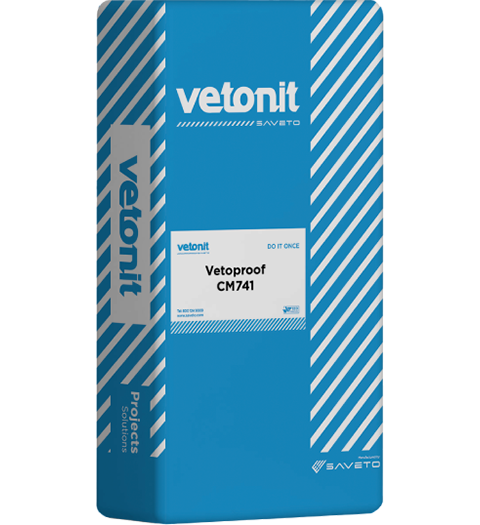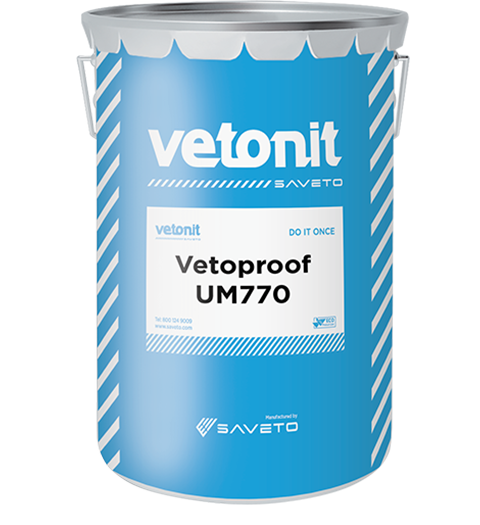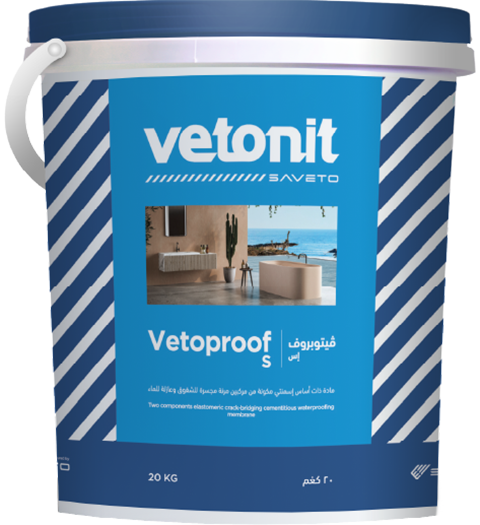ڤيتوبروف سي ام 741
عزل مائي أسمنتي بالتبلور.
<p>Vetoproof CM741 provides a total and permanent waterproofing solution to water leakage, ingress, or seepage in concrete structures or any cementitious substrates due to its unique, surface-applied penetrative capillary waterproofing system. Vetoproof CM741 works through internal crystallization that seals the concrete’s pores and hairline cracks, thus effectively blocking water passage. The active chemical that made up Vetoproof CM741 catalyzes to reactivate the crystallization process every time water penetrates the structure through newly formed capillaries, therefore, ensuring permanent water tightness.</p>

Uses
- On concrete and cementitious substrates.
- Swimming pools.
- Reservoirs and water tanks.
- Canals, harbors, and dams.
- Concrete pipes.
- Tunnels.
- Retaining walls.
Advantages
- Non-toxic and does not contain any momentary organic components.
- Excellent resistance to freeze-thaw cycles.
- It can be applied even on the humid surface.
- Guarantees permanent water sealing of concrete.
- It can be applied to all structurally sound concrete, whether old or new.
- Active components present in the watertight concrete reactivates upon impact with the water.
- Treated concrete is completely watertight after 5 days.
- Highly resistant to deicing salts, sulphuric acid, and hydrochloric acid during at least 35 days.
- Shields concrete and reinforcement from corrosion due to water.
Usage Instructions
All surfaces where Vetoproof CM741 has to be applied must be clean and have an open capillary system. Eliminate laitance, dirt, grease, and other loose materials utilizing high-pressure water jetting or wet sandblasting. Defective concretes such as cracks and honeycombs, etc., have to be chased out and repaired before the application. Also, make sure that all surfaces must be damp but not totally wet before progressing the work.
If the application method is by using a masonry brush, mix 7-7.5 liters of water with 25kg of Vetoproof CM741, while when using a power-spray gun, prepare a mixture of 8 – 8.5 liters of water with 25kg of the product.
Mix only as much product as necessary and ensure to stir the mixture regularly. If the mixture starts to set, it is not advisable to add more water; instead, re-stir the prepared mixture to reinstate its workability.
Apply Vetoproof CM741 into two coats with the use of a masonry brush or power-spray gun. Make sure to apply the second coat while the first coat is still “green”.
Keep all areas where Vetoproof CM741 is applied damp, protected against direct exposure from sunlight, wind, and frost by covering the area with polythene sheeting, damp hessian cloth, etc., for a period of 5-7 days.
Ensure that the period between applying the first and second layer is between 3 – 4 hours at a temperature of 20°C.
Clean all tools employed to apply Vetoproof CM741 with water before it hardens; otherwise, mechanical means are needed.








